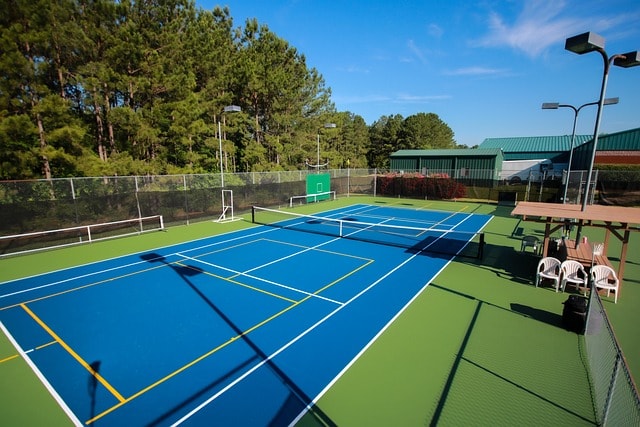Let's be honest—foot pain is something most of us just try to ignore, hoping it'll go away on its own. But you don't have to just "live with it." Think of arch support insoles as a dedicated support system for your feet, working from inside your shoes to redistribute pressure, correct your alignment, and bring back a level of comfort you might have forgotten was possible.
Why Your Feet Might Be Asking for Help
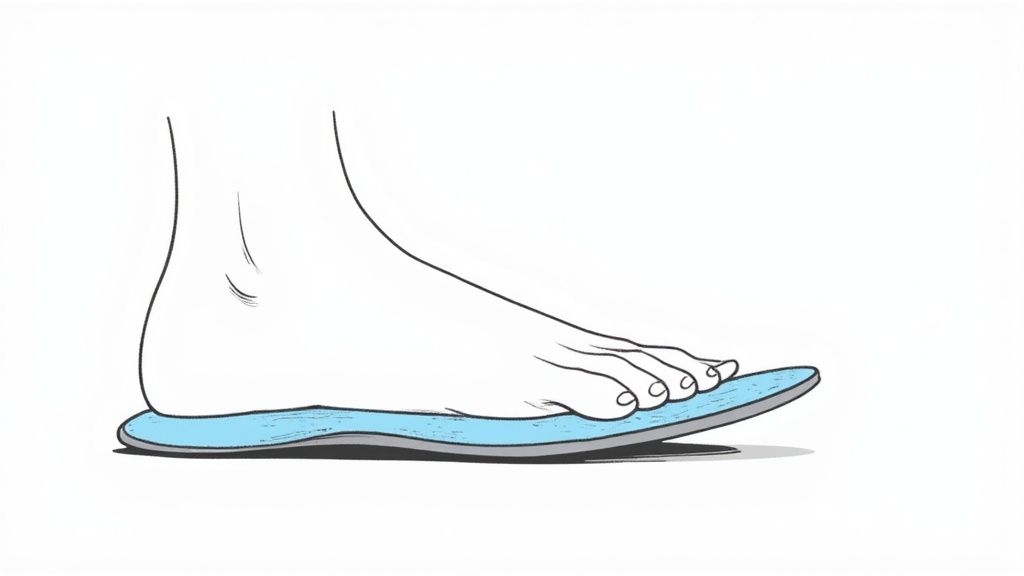
Your foot's arch is a lot like the suspension on a car. A healthy arch absorbs shock, adapts to different surfaces, and keeps your entire body balanced and moving smoothly. But when that system gets compromised—whether from flat feet, unusually high arches, or just plain old overuse—the entire structure feels off-kilter and, frankly, painful.
This is where finding the right support makes all the difference. An arch support insole isn't just a squishy pad. It’s a carefully designed biomechanical tool that helps restore your foot's natural function. By creating a structured yet flexible base, it guides your foot into a more neutral position every time you take a step.
The Foundation of Comfort and Stability
Imagine a house built on a shaky foundation. Sooner or later, you'd see cracks in the walls and uneven floors—the whole structure would be compromised. Your feet are your body's foundation. When they aren't properly supported, the stress doesn't just stay put. It travels right up your body, often leading to nagging pain in your:
- Ankles
- Knees
- Hips
- Lower back
By fixing the problem at the source, arch support insoles can relieve the strain on all these connected joints, helping your entire body find a healthier alignment.
The real job of an arch support insole is to take the pressure off the ligaments and tendons that hold up your arch, like the plantar fascia. This support lets those tissues do their job without being overworked, which is the key to stopping pain before it starts.
More and more people are catching on to this connection between happy feet and overall wellness. It's no surprise the global foot orthotic insoles market was valued at around USD 4.83 billion in 2024 and is expected to climb to USD 8.23 billion by 2033. This isn't just a trend; it's a sign that people are realizing how vital proper foot support is for staying active and pain-free. If you're curious, you can dig into the numbers and drivers behind this growth in the full market analysis.
More Than Just Cushioning
It's a common mistake to think that the softest, most cushioned insole is always the best. While a soft gel pad might feel nice for a minute, it rarely fixes the underlying issue: poor alignment. A truly effective arch support does so much more.
Here’s a quick breakdown of what a quality insole really does for you.
Quick Look at Insole Benefits
| Benefit | How It Helps You | Ideal For |
|---|---|---|
| Pressure Redistribution | Spreads impact evenly across your foot instead of letting it all land on your heel or the ball of your foot. | Anyone who stands all day for work, as it cuts down on fatigue. |
| Improved Alignment | Stops your ankle from rolling too far inward (overpronation) or outward, giving you a much more stable stride. | People with flat feet, high arches, or wobbly ankles. |
| Enhanced Shock Absorption | Lessens the jarring force of walking or running on hard surfaces, which protects your joints and muscles from wear and tear. | Runners, athletes, and anyone leading an active life. |
As you can see, the benefits go far beyond simple comfort, targeting the root causes of foot-related problems to improve your stability and overall well-being.
Signs You Could Benefit from Arch Support
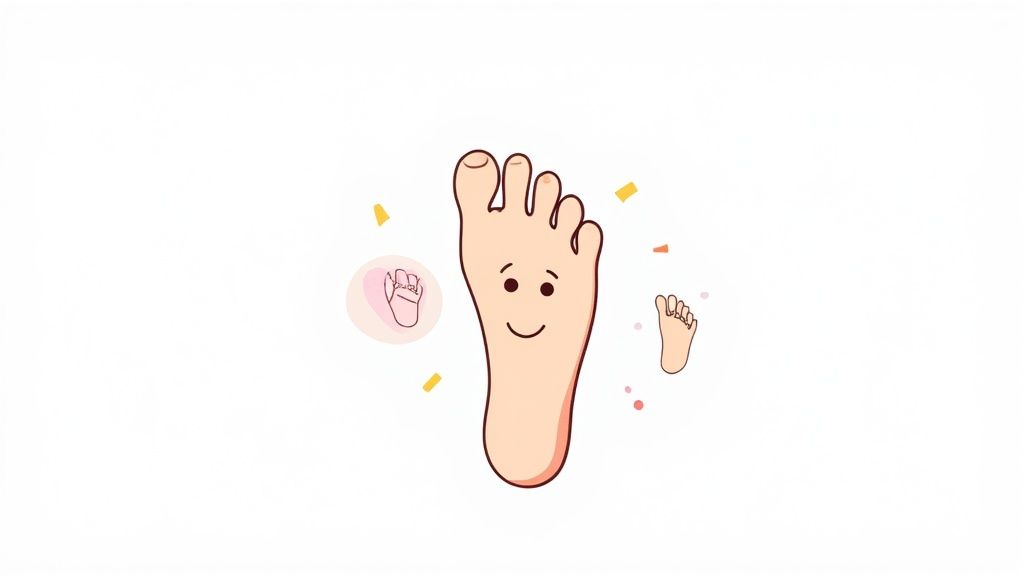
How do you know if you're one of the millions who could find relief with arch support insoles? It's a great question. Often, your body sends pretty clear signals, but they're easy to brush off as just the price of a long day. Learning to listen to what your feet are telling you is the first step toward feeling better for good.
The most obvious sign, of course, is foot pain that just won't quit, especially in your heel or the arch itself. If those first few steps out of bed feel like you're walking on hot coals, you're likely dealing with plantar fasciitis. That's a classic symptom of an overworked and inflamed ligament that supports your arch.
But the signals don't stop at your feet. That nagging, unexplained ache in your ankles, knees, hips, or even your lower back can often be traced right back to poor foot alignment. When your arches aren't doing their job, the shock of every step travels right up your body.
Common Foot Conditions That Need Support
Certain foot types are just naturally more prone to pain and instability. Once you understand what's going on with your foot's mechanics, it's easier to see how a simple insole can make such a big difference.
Here are three of the most common culprits we see:
- Plantar Fasciitis: This is the number one cause of heel pain. Insoles help by supporting the arch, which takes a huge amount of strain off that inflamed plantar fascia ligament, giving it a chance to finally heal.
- Flat Feet (Pes Planus): When your arches are low or have collapsed completely, your ankles tend to roll inward—a motion called overpronation. This throws your entire body out of alignment and can cause pain everywhere. Insoles step in to stabilize the foot and guide it back to a more neutral, balanced position.
- High Arches (Pes Cavus): Having arches that are too high might sound like a good thing, but it often concentrates all your body weight onto the heel and the ball of your foot. This creates intense pressure points and instability. The right insole helps distribute that pressure much more evenly across the entire foot.
If you suspect your ankle rolling inward might be the source of your problems, we have a resource that can help. Take a look at our guide on orthotic insoles for overpronation to see exactly how alignment affects your comfort.
Real-Life Scenarios Where Insoles Make a Difference
You don't need a formal diagnosis to benefit from better foot support. Sometimes, it just comes down to your lifestyle. If you spend a lot of your day on your feet, you are the perfect candidate for arch support insoles.
Think about these everyday situations:
- The Nurse on a 12-Hour Shift: Pounding the hard hospital floors for hours on end is brutal on the feet. A quality insole can absorb that shock and keep the arches from collapsing under the strain.
- The Retail Employee: Standing in one spot can be just as taxing as walking all day. Insoles help spread your body weight out, preventing those painful pressure points in your feet and lower back.
- The Weekend Runner: The repetitive impact from running puts a massive amount of stress on your feet. A good insole provides the stability and shock absorption needed to help fend off common running injuries.
If you see yourself in any of these scenarios, it might be time to stop toughing it out. Giving your feet the support they need can be a game-changer.
What Makes a Great Arch Support Insole
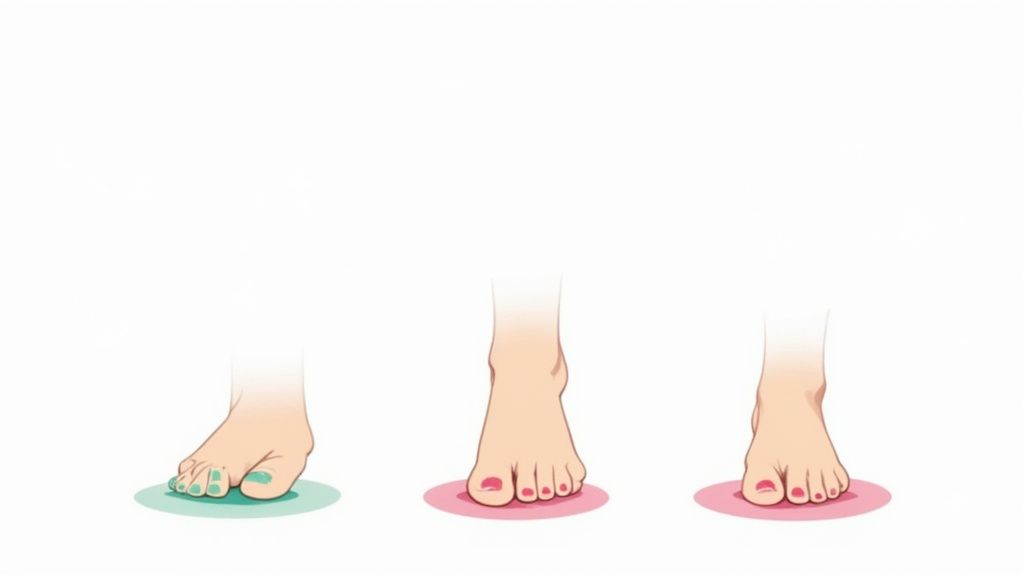
When you start looking for arch support insoles, you’ll quickly find that not all are created equal. Some feel like soft pillows, others like rigid plates. The key to finding one that actually works is understanding what goes into a genuinely effective design.
Think of it like building a house. You can't just throw down some carpet and call it a foundation. You need a solid structure underneath that can handle daily wear and tear. A great insole isn’t just a cushion; it’s a smart piece of biomechanical engineering designed to properly guide your foot.
The Core Components of Quality Support
The real magic of a high-quality insole is in its anatomy. To get the stability and comfort your feet are craving, you need to pay close attention to three key features: the arch design, the heel cup, and the materials.
Each of these elements has a specific job to do, from correcting your alignment to spreading out pressure. When they all work in harmony, they create an environment where your foot can move the way it's supposed to—without the strain that leads to pain.
Let’s break down exactly what you should be looking for.
-
Dynamic Arch Support: The arch of an insole shouldn't be a stiff, unmoving lump. Your foot’s arch is designed to flex and adapt as you walk. A great insole supports this natural movement, giving you structure without locking your foot into place. This is absolutely critical for fighting off foot fatigue.
-
Deep Heel Cup: This might be the most important feature people overlook. A deep, well-formed heel cup cradles the fatty pad under your heel and helps prevent your ankle from rolling inward or outward. It stabilizes your entire foot from the moment you take a step, creating a secure base for everything that follows.
-
Durable, Springy Shell: The "engine" of the insole is its inner shell. You want a material that's both durable and flexible, providing a springy, responsive lift. This is what truly holds up your arch, unlike cheap foam that just flattens out under your body weight. For instance, Samurai Insoles Ninjas are built with a medical-grade polypropylene shell that’s incredibly resilient yet surprisingly lightweight.
Materials Matter Most
The materials an arch support insole is made from will make or break its performance and durability. A flimsy foam insert might feel nice for a minute, but it will quickly compress and lose its shape, leaving you right back where you started.
Real support comes from materials that can stand up to thousands of steps a day without giving up. The industry is always innovating here. In fact, the global foot insoles market is expected to grow by USD 2.2 billion between 2025 and 2029, a jump fueled largely by new materials and a greater public focus on fitness. You can explore the full analysis from Technavio to see where the market is headed.
The best insoles strike a delicate balance between supportive firmness and flexible comfort. They shouldn’t feel like you have rocks in your shoes, but they need enough structure to keep your arch from collapsing.
This balance is what separates a premium insole from a generic drugstore insert. If you have flat feet, getting this blend of materials right is even more important for finding relief. For a closer look, read our guide on choosing the best insoles for flat feet to learn how different designs tackle this common issue.
Comparing Insole Materials
To help you sort through the options, it's useful to know what the most common materials offer. Each has its own strengths and is suited for different needs.
| Material | Core Feature | Best For |
|---|---|---|
| Polypropylene | A rigid, durable, and highly supportive plastic. It creates a springy shell that holds its shape under pressure. | Providing structured, medical-grade support for issues like overpronation and plantar fasciitis. |
| EVA Foam (Ethyl Vinyl Acetate) | Lightweight foam with excellent cushioning. It comes in different densities, from soft to firm. | General comfort, shock absorption in athletic shoes, or as a soft top cover over a supportive shell. |
| Memory Foam | Contours perfectly to the shape of your foot, providing a personalized cushion. | Relieving specific pressure points and creating a soft feel, but offers very little structural support. |
| Gel | Fantastic at absorbing shock and providing targeted cushioning, especially in the heel and ball of the foot. | Adding comfort to hard shoes, but it doesn't provide the arch support needed to correct alignment. |
In the end, a truly great arch support insole is a thoughtful combination of these materials. It pairs a firm, supportive shell with a comfortable, shock-absorbing top layer to give you the best of both worlds: relief that actually works and comfort that lasts all day long.
How to Choose the Right Insoles for Your Feet
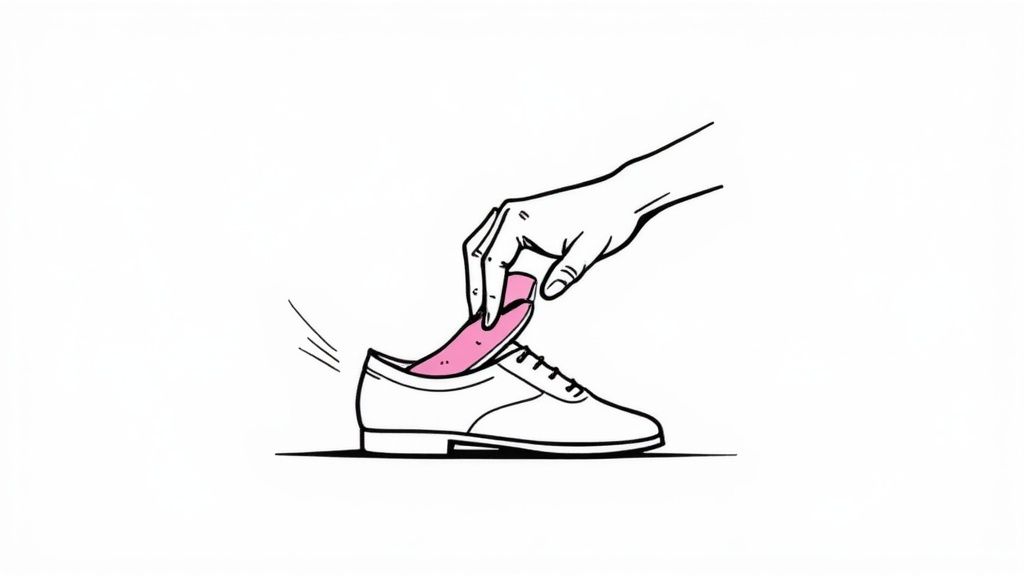
Picking out the right arch support insoles can feel like a shot in the dark, but it doesn't have to be. It really just comes down to knowing two things: your feet and your lifestyle. Once you have a handle on those, you can confidently choose a pair that gives you real relief, not just more padding in your shoes.
Let's walk through how to find your perfect match.
Start with the Wet Test
First things first, you need to figure out what kind of arches you’re working with. You don’t need any fancy equipment for this—just a shallow pan of water and a piece of cardboard or even a heavy paper bag will do the trick.
This simple home diagnostic, known as the "wet test," gives you a surprisingly clear picture of your foot’s shape and what it needs to feel supported.
Here’s how you do it:
- Get Your Foot Wet: Pour just enough water into a pan to cover the bottom, then step in. Make sure the entire sole of your foot gets wet.
- Make Your Imprint: Carefully step out of the water and onto your cardboard. Try to stand naturally for a few seconds to let the water really soak in.
- Analyze the Footprint: Step off and take a good look at the mark you left behind. That shape is your arch type.
So, what does that wet footprint actually tell you?
Interpreting Your Results
- Flat Arch (Low Arch): You’ll see nearly the entire bottom of your foot. This is a classic sign that your arch collapses when you stand, leading to overpronation. You need an insole with firm, structured support to keep your ankle from rolling inward.
- Normal Arch (Medium Arch): Your footprint shows a nice, clear curve on the inside, with a solid band connecting your heel and the ball of your foot. Your goal is to keep that healthy alignment with support that’s balanced and flexible.
- High Arch: You’ll see a very thin line—or maybe no line at all—connecting your heel and forefoot. This means your weight is focused almost entirely on your heel and the ball of your foot. You'll want an insole with plenty of cushioning to help spread that pressure out more evenly.
Match Your Insoles to Your Lifestyle
Knowing your arch type is only half the equation. The other half is thinking about what you do all day. An insole that’s perfect for a marathon runner is probably going to be overkill for someone who works at a desk. The trick is to be honest about your daily grind.
Where do your feet hurt the most? Are you on your feet for 8 hours a day on hard concrete floors? Or are you just looking for a little more stability on your weekend hikes?
Think about it this way. Samurai Insoles designs different models for different lives:
- For Everyday Wear: If you just need solid, all-day support for walking and standing, the Samurai Insoles Originals are a fantastic go-to. They offer a great mix of comfort and structure that fits into most everyday shoes.
- For High-Impact Activities: For runners or anyone whose feet take a pounding, the Samurai Insoles Sumos are built with extra foam. This helps absorb shock and protect your joints from all that impact.
- For Maximum Stability: If you need more serious pronation control, the Samurai Insoles Shoguns have a built-in heel lift along with arch support to deliver a higher degree of stabilization.
Choosing the right arch support isn't about grabbing the hardest, most rigid insole on the shelf. It’s about finding one that supports your foot’s natural movement while correcting harmful patterns like overpronation. A good insole should work with your foot, not fight against it.
Consider Your Shoe Type
Finally, the best arch support insoles are the ones you’ll actually use because they fit in your shoes. A thick, heavy-duty insole made for a work boot just isn't going to squeeze into a pair of slim dress shoes. You have to match the insole’s size to the shoes you wear most.
- Athletic and Work Shoes: These shoes usually have removable liners and more room inside, making them perfect for full-length orthotics with extra cushioning, like the Samurai Insoles Sumos.
- Casual and Dress Shoes: Tighter shoes need a lower-profile insole. An option like the Samurai Insoles Ninjas is specifically designed to be thin, so it can slip right under your shoe's existing liner without making your toes feel cramped.
By taking a few minutes to check your arch type, think about your daily routine, and match the insole to your shoes, you’re setting yourself up for success. It’s a simple process that ensures you end up with a product that gives you targeted relief and makes every step feel better.
Making Your New Insoles Last
So, you’ve invested in a good pair of arch support insoles. That’s a huge step toward happier feet. But getting the most out of them means knowing how to use and care for them properly. A little bit of attention goes a long way in making sure they keep delivering that crucial support.
Your journey to comfort really starts the moment you open the box. Getting them set up correctly is simple, but it's the key to getting the fit and feel just right.
Setting Up for Success
For most full-length insoles, the first thing you'll want to do is pull out the factory liners that came with your shoes. You know the ones—those thin, flimsy bits of foam that offer virtually no support and just get in the way.
With the old liner gone, slide your new arch support insole into the shoe. You’ll want to make sure it’s lying flat and the heel is pushed all the way to the back. Some thinner models, like our Samurai Insoles Ninjas, are designed to fit right on top of the factory liner, so in that case, you can just skip this step.
A Quick Heads-Up: Your new insoles will probably feel a little strange at first. Don't worry, that's not a bad sign! It just means your feet are getting used to a new, healthier alignment. This initial awkwardness is totally normal.
Most people find they need a short break-in period. I usually tell people to start by wearing them for just a couple of hours on day one. Then, over the next week or two, gradually wear them for longer until they feel comfortable all day. This lets the muscles and ligaments in your feet adapt without getting overwhelmed.
Keeping Your Insoles Fresh and Effective
A little maintenance can keep your insoles from getting funky and help preserve their structure. The good news? It’s incredibly easy.
- Routine Cleaning: All you need is a damp cloth and a little bit of mild soap. Just give them a good wipe-down.
- Drying is Key: Let them air dry completely before you slide them back into your shoes. Whatever you do, don't throw them in the washing machine or dryer. The heat can completely warp the supportive shell and ruin them for good.
That simple routine is all it takes to keep your insoles fresh. And if you're dealing with stubborn heel pain, pairing well-cared-for insoles with the right exercises can be a game-changer. We dive much deeper into this in our guide on how plantar fasciitis insoles fix heel pain.
Knowing When to Say Goodbye
Even the best insoles don’t last forever. The daily grind of thousands of steps eventually causes the materials to break down. Continuing to use a worn-out pair can be worse than using no insole at all.
Keep an eye out for these tell-tale signs that it's time for a new pair:
- Visible Wear and Tear: Are there cracks in the supportive shell? Is the top fabric peeling away or the cushioning totally compressed?
- Loss of Support: If you press on the arch and it feels lifeless and flat instead of springy, the core support is probably shot.
- The Return of Pain: This is the biggest red flag. If your old foot pain starts creeping back in, it’s a clear signal your insoles have done their duty and it's time for a replacement.
As a rule of thumb, a quality pair of insoles should last you about 6 to 12 months of regular use. By listening to your body and looking for these signs, you can make sure your feet always have the solid foundation they deserve.
Still Have Questions About Arch Support? Let's Clear Them Up.
Even when you know you need better arch support, it's natural to have a few questions before you commit. Making sure you have the right answers is key to feeling good about your decision—and, more importantly, feeling good in your shoes.
Let's walk through some of the things people ask us all the time.
How Long Does It Take to Get Used to New Insoles?
This is a great question. You have to give your feet a little time to adjust. Think of it like breaking in a new pair of leather boots—you don't wear them for 12 hours on day one. Your feet have gotten used to functioning a certain way, and a new insole is going to guide them into a healthier alignment.
We always suggest easing into it. Wear your new insoles for just two to three hours the first day. Then, over the next week or so, gradually add more time until you can wear them all day without a second thought. This slow-and-steady approach lets the muscles and ligaments in your feet adapt comfortably without feeling overworked.
Can I Move My Insoles From One Pair of Shoes to Another?
You bet! That’s one of the best things about a great pair of over-the-counter insoles. They aren't tied to a single pair of shoes. You can easily swap them between your running shoes, your work boots, or your favorite everyday sneakers.
Just keep one thing in mind: shoe volume. A beefy, cushioned insole made for a roomy pair of hiking boots probably won't squeeze into a pair of slim dress shoes. For tighter footwear, you'll want a lower-profile insole that still gives you that crucial support without making your toes feel cramped.
What's the Real Difference Between Store-Bought and Custom Orthotics?
This is the big one, and it causes a lot of confusion. The differences really boil down to how they're made, what they're for, and how much they cost.
Here's the truth: most people don't actually need expensive, custom-molded orthotics. For the vast majority of common foot issues like plantar fasciitis or general arch pain, a well-designed over-the-counter insole provides all the support needed to feel a world of difference.
Let's break it down simply:
- Over-the-Counter (OTC) Insoles: These are engineered using biomechanical data from thousands of feet to target the most common problems. They are an affordable, accessible, and surprisingly effective solution for everything from tired feet to moderate overpronation. Samurai Insoles are a fantastic example of this kind of smart, ready-to-wear support.
- Custom Orthotics: These are prescribed by a doctor and are molded to the exact shape of your foot. They’re typically reserved for more severe structural foot problems, major deformities, or other complex medical needs. As you might guess, they come with a hefty price tag, often running several hundred dollars.
For most of us, a high-quality OTC insole hits that sweet spot of comfort, support, and value.
Ready to feel the difference for yourself? Samurai Insoles has a whole range of designs built for your specific needs, whether you're on your feet all day or hitting the trail. Explore our collection and find your perfect fit today.



